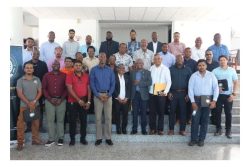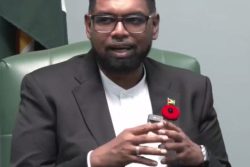Dear Editor,
On October 10, 2024, there was a special sitting of the National Assembly whereby the Head of State, His Excellency, Dr. Mohamed Irfaan Ali addressed the 86th sitting of the 12th Parliament, and the nation at large. In his address, the President outlined a menu of initiatives and policy measures aimed at targeting cost-of-living. These include: (i) a one-off cash transfer of $200k per household, (ii) a $10,000 tax-free allowance per child, (iii) free tertiary education at the University of Guyana from January 2025, and (iv) 50% reduction in electricity cost in 2025, among several others.
Following President Ali’s address, the main opposition parties, namely the APNU and the AFC, both demonstrated a “knee jerk reaction”, signaling discomfort and nervousness in their camps. The leader of the AFC, for instance, sought to remind the nation that the “cash transfer” to households was first articulated by Dr. Clive Thomas in 2018, and that the PPP/C Government has finally adopted his proposal ahead of the 2025 general and regional elections.
Concerns were also raised on whether the cash transfer would trigger “hyper-inflation”. The short answer is “no”. Hyper-inflation is high rates of inflation―high double and triple digits inflation. The one-off-cash transfer represents just about 1.3% of GDP, thus, will not trigger hyper-inflation.
However, the question is whether it will be inflationary, which is worth exploring. Let’s look at this from the “Clive Thomas” and the AFC/APNU proposed model versus the current model adopted by the Government. The “Clive Thomas/AFC /APNU” model proposes to grant an “unconditional” direct transfer per person annually as opposed to per household―thereby making it a recurrent expenditure.
The current model adopted by the Government is fundamentally different to the version proposed by Dr. Clive Thomas adopted by the APNU+AFC; such that, it is a one-off transfer in response to a specific need, which forms part of a comprehensive set of fiscal measures to combat the high cost-of-living plaguing households. Now, let’s explore the implications of both versions.
The population is now estimated to be in the region of 800k people. If we use the “Clive Thomas/APNU+AFC” version, it will cost US$800 million or GY$168 billion, representing 3.6% of GDP. In another variation proposed by the APNU’s is for it to be a monthly payment as opposed to annually (this is their most recent proposal at US$1,500 per person). In this case, it will cost US$14.4 billion annually, representing 65.5% of GDP and 5.3 times the projected oil revenue that the government will have earned for this fiscal year, 2024. Put simply, it would cost 5.3 times more than what we are currently earning from the oil resources. As such, in the case of the “Clive Thomas and/or the APNU’s” proposal, both variations of theirs would have been fiscally unsustainable and unfeasible in relation to the actual earnings from the oil resources, as well as exacerbating inflationary pressures.
Conversely, in the case of the current version by the governing party, inter alia, a one-off transfer per household equating to 1.3% of GDP, it is unlikely to engender sustained inflationary pressures, and more importantly, it is well within a fiscally sustainable framework.
Sincerely,
Joel Bhagwandin





